Detox Local’s Periodic Table of Drug Detox outlines the most addictive and dangerous drugs in the US, along with recommendations on when finding help a medical detox center is recommended.
Related: What are the Symptoms of Drug & Alcohol Withdrawal?
This table is organized to the best of our abilities by ordering substances based on rating of harm and prevalence while resembling the structured organization of an actual periodic table. Based on statistics from National Institute on Drug Abuse, Substance Abuse and Mental Health Services Administration, Drug Enforcement Administration and US Food and Drug Administration, among other reliable sources.

Alcohol
One of the oldest drugs used by humans, alcohol is very dangerous; both through use and from withdrawal. It acts primarily on both GABA and glutamate systems and produces a profound depression of neurological functions. The most immediate effects of alcohol include anxiety reduction, loss of inhibitions, relaxation, euphoria, drowsiness, and loss of coordination. Alcohol use can produce dependence and withdrawal symptoms in a fairly short time, usually after just a month of daily use.
Who Should Seek Professional Help?
- Long time drinkers (1+ years)
- Heavy or daily drinkers
- Those who have gone through alcohol withdrawal before
- Those with diabetes or heart disease

Heroin
Heroin is a very powerful semi-synthetic opiate painkiller that produces an intense physical euphoria and is a powerful suppressor of emotions. Use can produce intense physical dependence, usually in just a few weeks of regular use. Withdrawal from heroin can be one of the most painful withdrawal syndromes, both due to its potency and because it is either snorted or injected. Since this produces such a profound change in the opioid system of the brain, symptoms tend to escalate quickly.
Who Should Seek Professional Help?
- IV heroin users
- Those who tried to quit using and relapsed
- Those with diabetes, heart, or liver disease

Cocaine
Cocaine is a very old drug which surprisingly is still used today for medical purposes, albeit very rarely. This drug is a psychostimulant and a local anesthetic which produces increased motivation, elevated mood and energy, and also produces a numbing effect. Cocaine produces psychological effects in the brain by increasing levels of dopamine, serotonin, and norepinephrine. While it affects all 3 neurotransmitters, its strongest effect is on dopamine. For its numbing properties, cocaine is able to block peripheral nerves to produce numbness and a general loss of sensation.
Cocaine is able to increase dopamine levels in the brain by ~300%. Through Chronic use, the brain will adapt through a process called downregulation; essentially turning down the potency of dopamine. The result is that once cocaine use ceases, the individual experiences a profound dopamine deficiency. Along with lowered levels of serotonin and norepinephrine, this produces the symptoms of cocaine withdrawal.
When Is A Detox Center Recommended?
A cocaine detox will often provide the best chance at a successful recovery. There may be certain situations, however, where entering a detox is recommended. These may include:
- If someone is an IV cocaine user
- They have used cocaine for long periods (1+ year)
- If they have co-occurring mental health issues

Crystal Meth
Meth is one of the most mentally and socially destructive drugs known today. While methamphetamine is used medically as a treatment for ADHD, narcolepsy, and obesity in the form of Desoxyn, this is very rare as the risks often outweigh the benefits. The immense neurological disruptions produced through chronic use can permanently change people’s behaviors and personalities, usually for the worse. Meth is able to increase dopamine levels in the brain by over 1,000% and this can cause neurological changes in a very short amount of time and after relatively brief exposures. Meth also works to increase levels of serotonin and norepinephrine, but its strongest effect by far is on dopamine.
When Is A Detox Center Recommended?
While crystal meth does not produce physical symptoms when someone stops using it, the psychological symptoms can be severe. It is usually recommended to enter a crystal meth detox center, and there are some cases where this is especially so:
- IV crystal meth users
- Co-occurring mental health issues
- Meth-induced psychosis
- Long time or heavy users (1+ year)
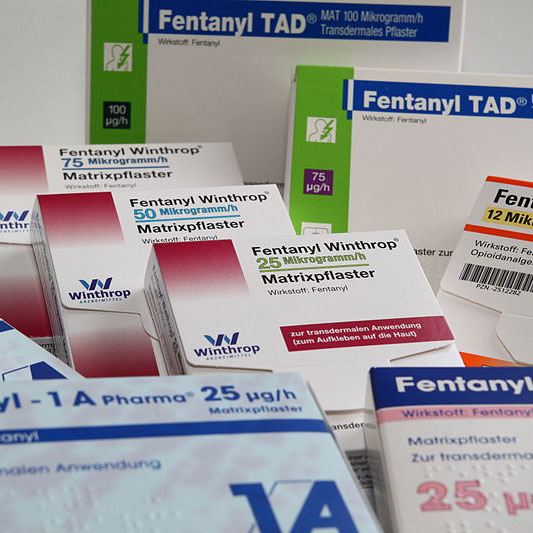
Fentanyl
Fentanyl is an extremely powerful synthetic opiate painkiller, which is somewhere between 50 to 100 times as potent as morphine. It is a “pure opioid” similar to morphine and hydromorphone and produces strong interactions at all 3 major opioid receptors, and the μ-opioid receptor in particular. Fentanyl has a medium half-life of ~7 hours and produces no active metabolites. There are multiple fentanyl analogs with varying potency, up to ~10,000 times more potent than morphine in the case of carfentanil.
When Is A Detox Center Recommended?
Getting clean from fentanyl can be very challenging, as it produces intense discomfort when someone suddenly stops using it. Entering a fentanyl detox center is often recommended, but there may be some situations where this is especially so, including:
- For people who were IV fentanyl users
- Previous, failed attempts at quitting
- Physical health issues such as diabetes, liver disease, or infections
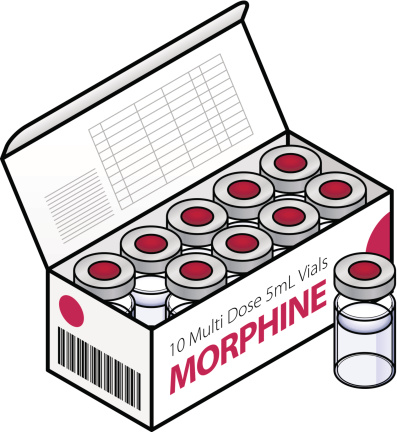
Morphine
Morphine is the oldest natural opiate that has seen consistent medical use. It is known as a “pure opioid” and is the gold standard by which the potency of other opiates is measured through a “relative-to-morphine” equivalency scale. It should be noted that heroin breaks down to morphine very quickly in the body, and is essentially a rapid delivery system for morphine. Morphine use produces depression of pain, vital functions, and intense euphoria and as far as illicit use is concerned it is mostly eaten in pill form. It produces strong interactions at all 3 major opioid receptor sites and thus produces severe withdrawal symptoms.
When Is A Detox Center Recommended?
Morphine can produce very uncomfortable effects when someone stops using it and entering a detox center is usually recommended. In certain cases, it may be very highly recommended to enter a morphine detox center, such as:
- For IV morphine users
- Long time users (1+ years)
- Previous, failed attempts at recovery
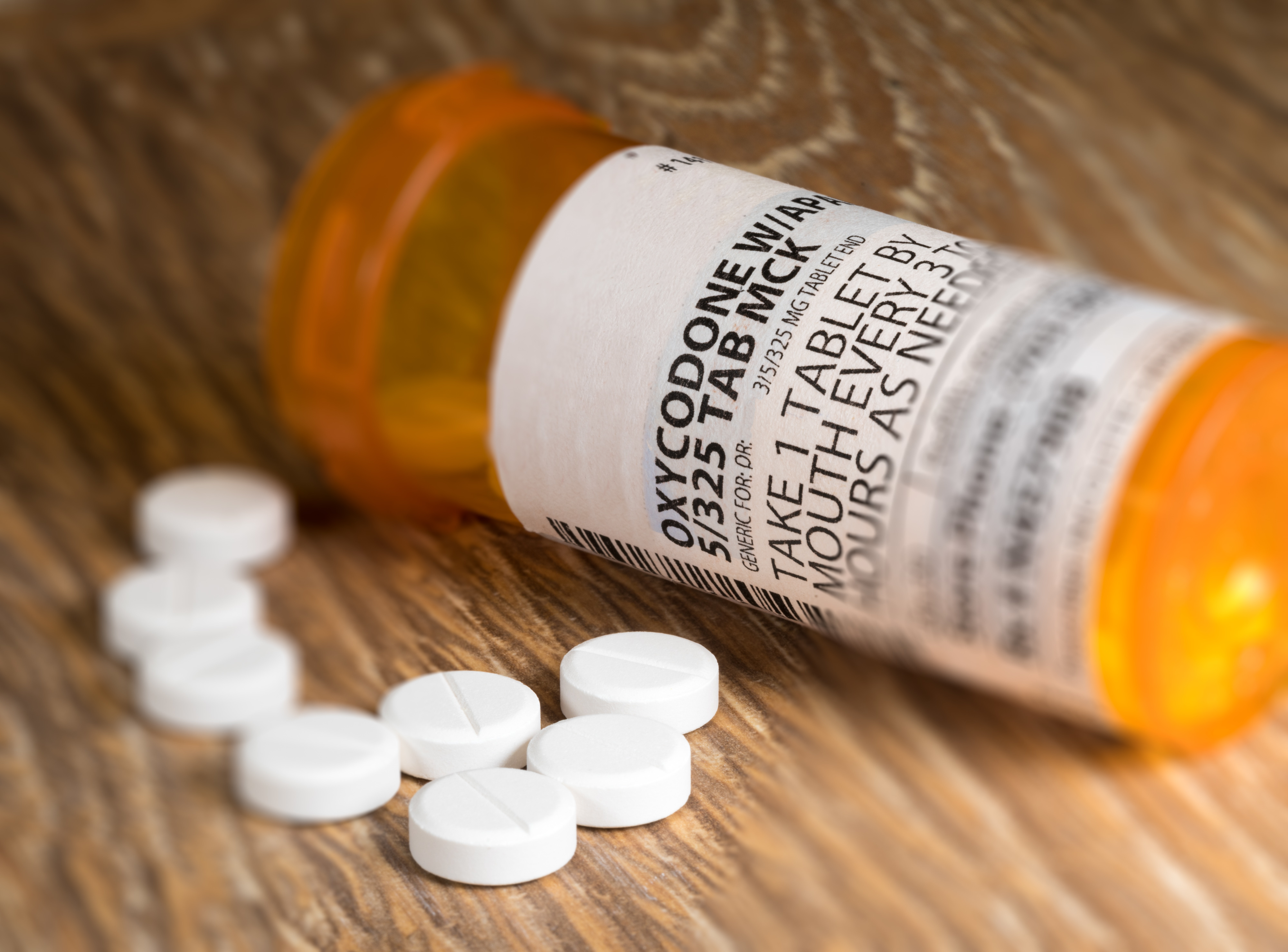
Oxycodone
Oxycodone is a very powerful semi-synthetic opioid that has risen dramatically in abuse rates since 1995 and is about 1.5 times as potent as morphine. It is a potent agonist at all 3 major opioid receptor sites, thus capable of producing very intense withdrawal symptoms after a relatively short period of daily use, sometimes in under a month. Additionally, the process of oxycodone metabolism produces other active opioid metabolites such as oxymorphone, which can prolong oxycodone’s duration of action. With a combination of high potency and a medium half-life of ~6 hours, oxycodone withdrawal can be an extremely painful and long-lived experience.
When Is A Detox Center Recommended?
Oxycodone is a very difficult drug to stop using on your own. Successful, long term recovery often requires entering an oxycodone detox center. This is especially the case in situations such as:
- IV oxycodone users
- Prior, unsuccessful attempts to quit using
- Long-time oxycodone users (1+ year)

Adderall
Adderall is a common medication used in the treatment of ADHD but is frequently abused due to its potency. This drug is a 50/50 mix of amphetamine and dextroamphetamine which produces effects vaguely similar to meth, although much less intense. Adderall works by increasing levels of dopamine and norepinephrine in the brain, subsequently producing an intense euphoria, mood elevation, promotes attention and focus, and increased energy levels. While withdrawal from Adderall is not fatal, it is an extremely unpleasant experience.
When Is A Detox Center Recommended?
An Adderall detox center is not always recommended, although in certain cases, it may be necessary. Some of these cases may include:
- Heavy or long time users (1+ year)
- Co-occurring mental health issues
- Previous, unsuccessful attempts to quit

Vyvanse
Vyvanse is another amphetamine that is commonly used to treat ADHD and frequently sees abuse. Vyvanse is a unique medication in that the active ingredient, lisdexamfetamine, is actually a prodrug delivery system for its active metabolite dextroamphetamine. Due to this, there is substantial variability in Vyvanse’s half-life, since metabolism must first break Vyvanse down into the main psychoactive compound. Vyvanse primarily works through increasing levels of dopamine and norepinephrine, and effects normally take over an hour to be felt, exhibiting increased attention, energy, and mood.
When Is A Detox Center Recommended?
When someone stops using Vyvanse, they may experience uncomfortable psychological symptoms. Entering a Vyvanse detox center is not always recommended, but some situations where this may be indicated include:
- Co-occurring mental health issues
- Heavy or long time users (1+ year)
- Previous unsuccessful attempts to quit

Methadone
One of the first fully synthetic opioids, methadone is an extremely potent painkiller. It works not only as an agonist on 2 of the major opioid receptors but also as an antagonist at the NMDA glutamate receptor. Through this unique mechanism of action, it produces strong pain relief and general depressant effects. Methadone also has an exceptionally long half-life of 7 to 59 hours (officially listed), but it has been estimated to be somewhere between 15 to 207 hours. There are also multiple genetic factors that affect the metabolism, and subsequent half-life, of methadone so there is substantial variability in half-life between individuals. Methadone also lacks a single equivalence potency, with the rate of metabolism affecting its specific potency between people.
When Is A Detox Center Recommended?
Methadone can be extremely difficult to stop using without help. It is usually recommended to enter a methadone detox when quitting, but there are some situations where it is very highly recommended. These could include:
- Long time users (1+ years)
- Co-occurring mental health issues
- Heavy users
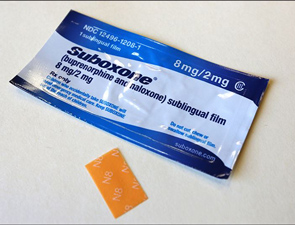
Suboxone
Suboxone is actually a combination of 2 different drugs, naloxone, and buprenorphine, and is used in the treatment of opiate addiction. We will confine our discussion to buprenorphine, as it is the active semi-synthetic opioid that produces dependence and subsequent withdrawal symptoms. Buprenorphine is a partial agonist of μ-opioid receptors and an antagonist at κ-opioid receptors. Due to this, it does not produce very strong effects, and it exhibits a phenomenon known as the “ceiling effect” which means that after a certain dose is reached, euphoria will not increase further. Suboxone also has a very long half-life of ~30 hours, so withdrawal takes a while to begin and is quite prolonged.
When Is A Detox Center Recommended?
Suboxone can produce very long-lasting effects when someone stops using it suddenly, and it is usually recommended to enter a suboxone detox center. In some cases, this is especially so, including:
- Heavy users
- Long time users
- Someone with co-occurring mental health issues

Hydrocodone
Hydrocodone is a fairly old and very common semi-synthetic opiate painkiller that is roughly as potent as morphine. It is an agonist at both the μ and δ opioid receptors, and it has a fairly long half-life of ~8 hours. Using hydrocodone will produce roughly similar painkilling effects as morphine, although the euphoria is not as intense. Hydrocodone metabolism produces the active metabolite hydromorphone, another potent opiate, although this is not present in sufficient quantities to contribute to hydrocodone’s euphoric or painkilling effects.
When Is A Detox Center Recommended?
Hydrocodone detox symptoms can be an unpleasant experience, although entering a hydrocodone detox center is not always recommended. There may be certain cases where this may be the best choice, including:
- Long time, heavy users (1+ year)
- Previous, failed attempts to quit

Vicodin
Both Vicodin and Lortab are a combination of hydrocodone and acetaminophen, with the weakest strengths for each being 5/300mg (Vicodin) and 5/325mg (Lortab). The high levels of acetaminophen in these drugs are incapable of producing withdrawal, however, it is extremely toxic to the liver especially when used in the high doses required to become addicted to Vicodin or Lortab. The liver issues that may arise from chronic use can be dangerous, and possibly even deadly.
When Is A Detox Center Recommended?
Vicodin can produce uncomfortable effects when someone stops using it suddenly, although entering a Vicodin detox center is not always recommended. In some cases, however, this may be necessary, including:
- Long time, heavy users (1+ year)
- Previous, failed attempts to quit
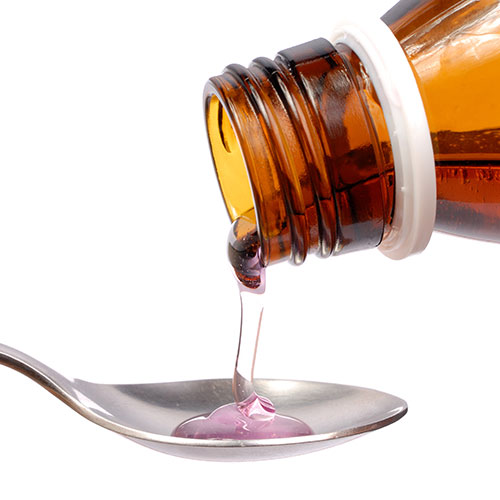
Codeine
Codeine is an old and fairly weak natural opiate painkiller, more commonly used as a cough suppressant, and is roughly 1/6th as strong as morphine. It is an agonist at all 3 major opioid receptors, so it will exhibit classical opioid withdrawal symptoms, however, it has a weak affinity for these receptors. Due to its weak receptor affinity and its similar half-life to morphine, the withdrawal symptoms may be much less intense than other opioid withdrawal symptoms.
When Is A Detox Center Recommended?
Codeine can produce fairly unpleasant effects when someone stops using it, although it tends to be quite mild compared to other opioids. That being said, there may be certain cases where it is recommended to enter a codeine detox center. These may include:
- Heavy, long time users (1+ year)
- Previous, failed attempts to quit

Dilaudid
Dilaudid is an extremely potent semi-synthetic opiate painkiller that is used as a fallback treatment for severe pain relief when other first-choice options have failed. It is known as a pure opioid, similar to morphine and fentanyl, and is an agonist at all 3 major opioid receptor sites. Dilaudid has particularly strong interactions at the μ-opioid receptor which is responsible for its strong painkilling effects. Dilaudid also has a similar half-life as morphine while it is at least 4x as potent and this will produce very intense withdrawal symptoms.
When Is A Detox Center Recommended?
Dilaudid can produce some very unpleasant symptoms when someone stops using it suddenly. While entering a Dilaudid detox center is not always recommended, there are certain cases where it may be strongly encouraged. These could include:
- IV Dilaudid users
- Long time users (1+ years)
- Co-occurring mental health issues
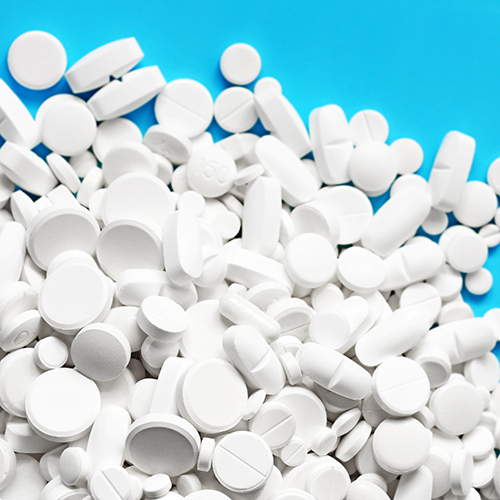
Opana
Opana is an extremely potent semi-synthetic opiate painkiller which is roughly 3x more potent than morphine. It acts to some degree on all 3 major opioid receptors, but it has particularly strong agonist activity at the μ-opioid receptor. It has a rapid onset of action of about 30 minutes and a medium half-life of between 8 to 10 hours, depending on the formulation someone takes. That being said, there does seem to be some variability in oxymorphone metabolism between individuals, and this can affect the half-life significantly.
When Is A Detox Center Recommended?
When someone suddenly stops using Opana, they can experience some very uncomfortable symptoms. It may not always be necessary to seek medical help, but there are certain cases where entering an Opana detox center would be highly recommended. These could include:
- IV Opana users
- Long time users
- Co-occurring mental health issues

Tramadol
Tramadol is a low potency synthetic opiate painkiller that is about 1/10th as strong as morphine. It produces typical opiate agonist effects at the μ-opioid receptor (although very weakly), and it also acts in a unique way compared to most opiates by preventing the reuptake of serotonin and norepinephrine. This complex mechanism of action may make it an atypical and effective painkiller, but it also gives the tramadol withdrawal syndrome some added challenges and discomforts. Tramadol has an elimination half-life of ~6 hours, but it does produce potent, active metabolites with half-lives of around 8 hours.
When Is A Detox Center Recommended?
Tramadol is a fairly weak opioid, although it can produce uncomfortable symptoms when someone stops taking it. While the symptoms of opioid withdrawal may be mild, tramadol produces other interactions that may produce additional symptoms. It is recommended to enter a tramadol detox center if:
- Someone has co-occurring mental health issues (particularly depression)
- Has been a long time user (1+ year)
- If someone snorted or injected tramadol
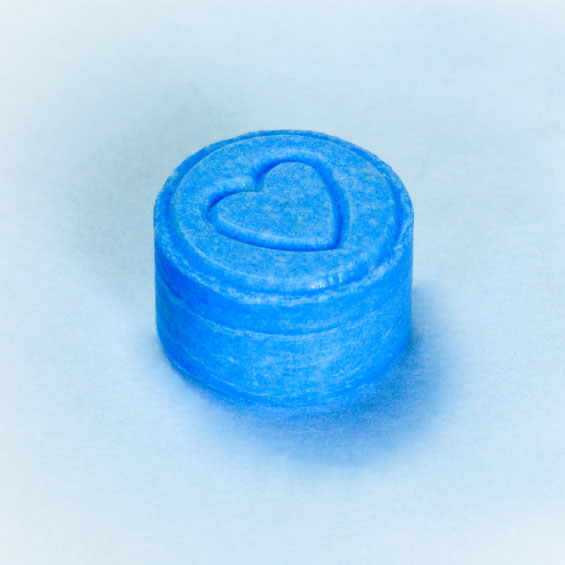
Ecstasy
Ecstasy is technically a methamphetamine that also produces hallucinogenic and entactogenic effects. It works by strongly increasing levels of serotonin, dopamine, and norepinephrine with the strongest effect on serotonin. It may also increase levels of oxytocin as a byproduct of serotonin stimulation, which may contribute to the empathic and emotional effects. Using ecstasy produces intense euphoria, strong feelings of connection and/or love, visual and tactile hallucinations, increased energy, and an elevation of mood and motivation.
When Is A Detox Center Recommended?
Quitting ecstasy can be a difficult task, and while an ecstasy detox center may not always be recommended, a few situations that may indicate an ecstasy detox center is highly recommended may include:
- Co-occurring mental health issues
- Heavy or long time users (1+ year)

Kratom
First off, it should be noted that kratom is not technically a proper opioid, although it does act on many of the same opioid receptors as true opioids do. While the exact way kratom works is unclear, it can act as both a stimulant and a sedative depending on the dose. It works on the three major opioid receptors with the strongest interaction at the κ-opioid receptor. At low doses, stimulant-like properties are dominant while at higher doses, opioid-like sedation is produced. Kratom also produces painkilling effects which are likewise dose-dependent, although they are present to some degree regardless of the amounts used.
When Is A Detox Center Recommended?
Kratom withdrawal symptoms are still somewhat mysterious, although they are certainly real. While it may not always be recommended to enter a kratom detox center, there are certain cases when this may be strongly advised. These could include:
- Heavy users
- Long time users (1+ year)
- Co-occurring mental health issues

Xanax
Xanax is one of the most commonly prescribed anti-anxiety medications and is roughly 15x as potent as Valium. It is very short-acting with a half-life of ~11 hours although there are some genetic factors that can alter the metabolism, and subsequently the half-life, between individuals. Xanax use has been shown to produce withdrawal symptoms in as little as 1 week of use, although these are initially minor and would not likely require detox by this point. Due to the high potency and short half-life of Xanax, withdrawal symptoms can become very intense and possibly dangerous in long-time users.
When Is A Detox Center Recommended?
Detoxing from Xanax without medical supervision can be very dangerous. While entering a Xanax detox center is often recommended, there are certain situations when it is absolutely recommended, such as:
- Long time user (1+ year)
- Heavy users
- History of seizures
- Co-occurring mental health issues

Klonopin
Klonopin is most commonly used to treat seizure disorders but also sees use as a treatment for anxiety issues. This is a very potent and very long-acting benzo, being roughly 15x as potent as Valium with a half-life of ~20-60 hours. Because of these characteristics, the Klonopin withdrawal syndrome is severe and long-lived. Additionally, due to its potency, the risk of seizures during withdrawal is greatly increased when compared to Valium.
When Is A Detox Center Recommended?
The Klonopin detox process can be very uncomfortable, and possibly even dangerous if done without medical supervision. This can be even more dangerous in certain situations, such as:
- Long time or very heavy users
- Co-occurring mental health issues
- History of seizures

Ativan
Ativan is primarily used to treat anxiety but is also commonly used off-label for treating alcohol withdrawal seizures and delirium. It is a potent benzo which is roughly 5-10x more potent than Valium and has a medium half-life of ~9 to 16 hours. Due to the potency and half-life, the withdrawal symptoms may be similar to those of Xanax, although slightly less intense. The risk of seizures during withdrawal is increased when compared to Valium withdrawal.
When Is A Detox Center Recommended?
The Ativan detox process can be uncomfortable, and possibly even dangerous if done without medical supervision. There may be certain cases that require an Ativan detox center, including:
- Long time or heavy users
- History of seizures
- Co-occurring mental health issues

Marijuana
Marijuana is commonly perceived as a “safe and harmless” drug, but this is absolutely not true. Even marijuana can produce withdrawal symptoms and these are frequently very protracted, as the major compounds in marijuana are highly fat-soluble, thus taking a very long time to leave the body. This may actually reduce the severity of withdrawal but can prolong the experience. While the major psychoactive compounds in marijuana are THC and CBD, there are over 60 other compounds in marijuana that interact with the cannabinoid system of the brain.
When Is A Detox Center Recommended?
While marijuana withdrawal is rarely dangerous, it can still be uncomfortable. There may be certain situations where entering a marijuana detox center is recommended, including:
- Heavy or long time users (1+ year)
- Co-occurring mental health issues (particularly depression, anxiety, and schizophrenia)
- Previous, unsuccessful attempts to quit
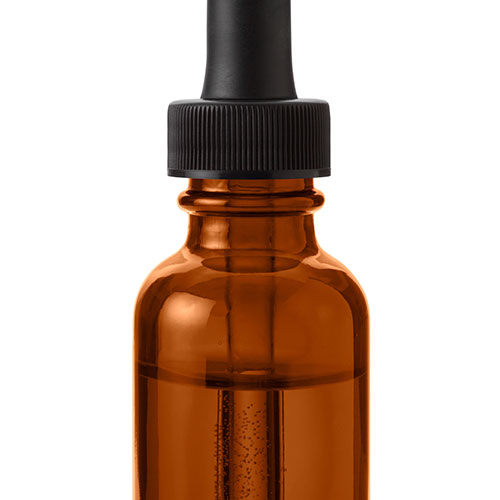
GHB
GHB is a very powerful sedative and central nervous system depressant. It acts on the GABA system of the brain and produces intense euphoria, increased libido, lowered inhibitions, impaired memory, and coordination. Strong sedatives like GHB have very unpleasant and possibly fatal withdrawal symptoms since the body and brain become hyperactive during withdrawal. Withdrawal from GHB can be considered a medical emergency and absolutely requires medical attention.
When Is A Detox Center Recommended?
GHB is very potent, and the detox process can range from uncomfortable to potentially life-threatening. Entering a GHB detox center is often recommended, but in some cases, it may be highly recommended. These may include:
- History of seizures
- Co-occurring mental health issues (particularly anxiety)
- Heavy or long-term users (1+ year)
Share This Table
Sharing this table is simple. Post on social media by just clicking the button.
Embed a link to this table on your site by copying the code below
This is what the embed link will look like on your website.
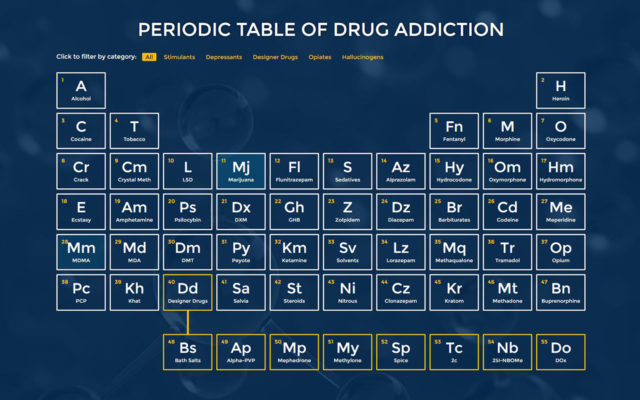 Detox Local's Periodic Table of Drug Addiction
Detox Local's Periodic Table of Drug Addiction
